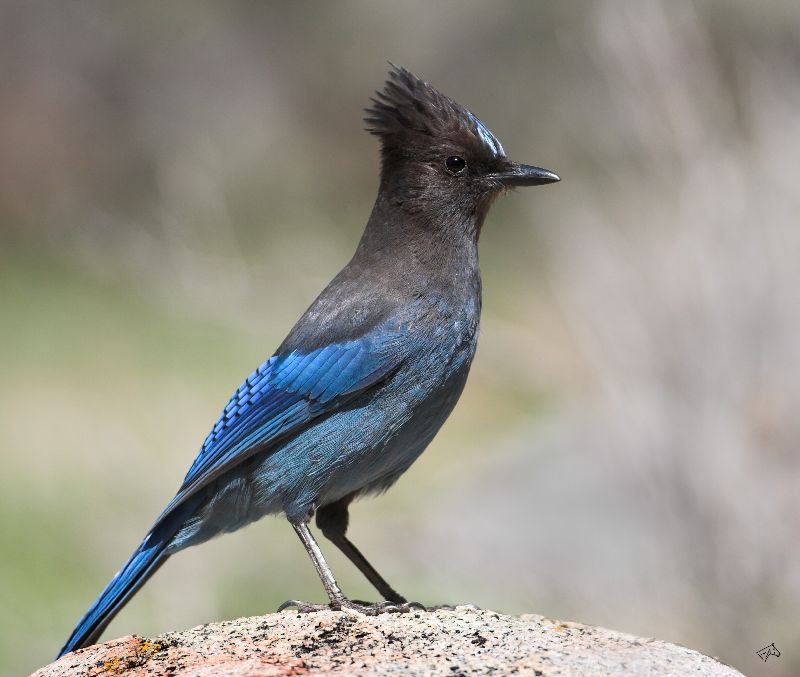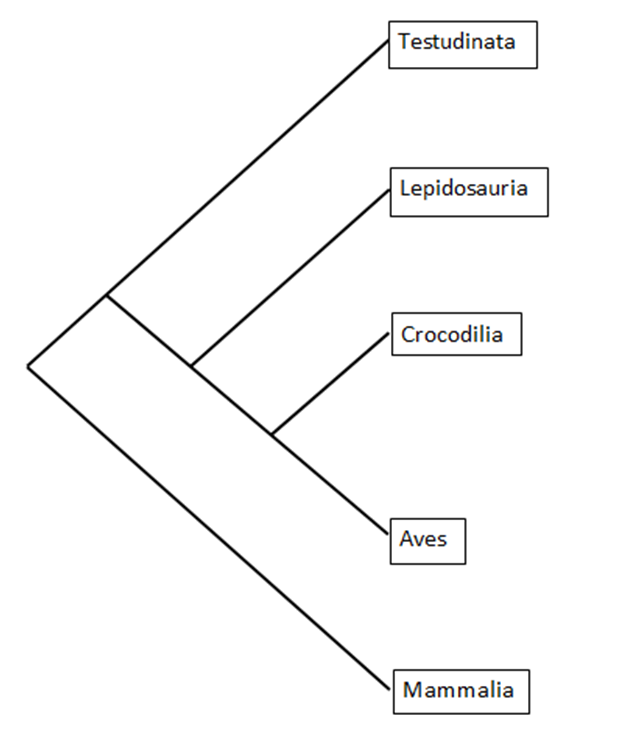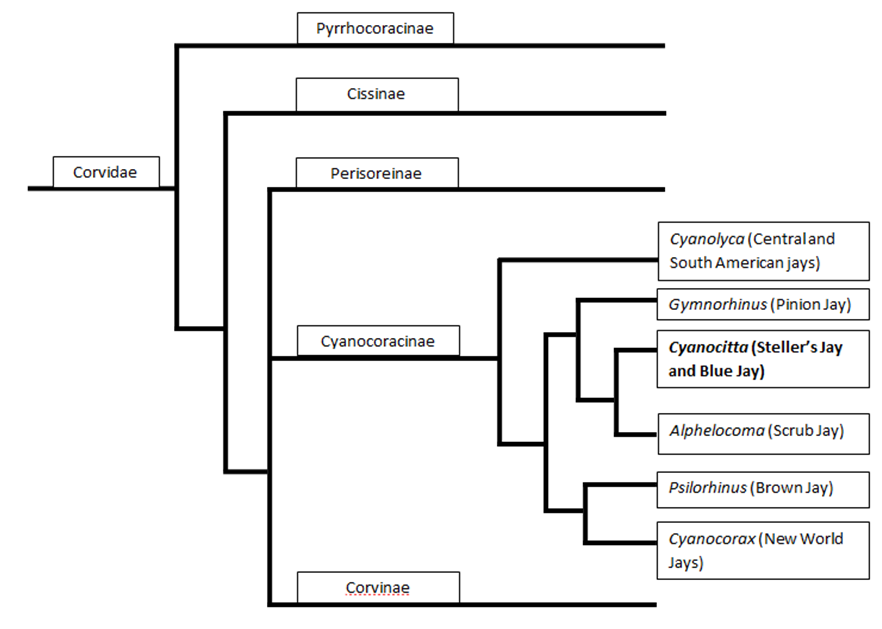Classification
Domain: Eukarya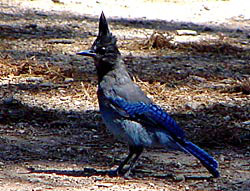
Steller’s Jay belongs to the domain Eukarya because their cells
have a true nucleus and organelles bound in a membrane (AWD
2001).
Kingdom: Animalia
Cyanocitta stelleri belongs to the kingdom Animalia because it
is multicellular and heterotrophic. The Steller’s Jays cells
also lack the cell wall that is associated with plant cells (ADW
2001).
Phylum: Chordata
The Steller’s Jay belongs in the phylum Chordata because they
contain a notochord. The notochord extends a majority of
the length of the body that helps stabilize the body and
supports the body during movement. Some other
characteristics in this phylum are bilateral symmetry and a
deuterostome developmental pattern (ADW 2001).
Class: Aves
Steller’s Jay fits into the Aves class because it has feathers
for flight, horny beak with no teeth, a hard shelled egg with a
large yolk, strong skeleton, and a large muscular stomach.
The parent bird also takes care of its young for an extended
period of time until they are grown (ADW 2001).
Order: Passeriformes
Passeriformes means “perching bird”, which is why Steller’s Jay
fits into this category. These birds have four toes total
with three unwebbed toes in the front and one flexible toe in
the back called a hallux. This toe arrangement allows them
to easily perch on branches (WJJ 2014).
Family: Corvidae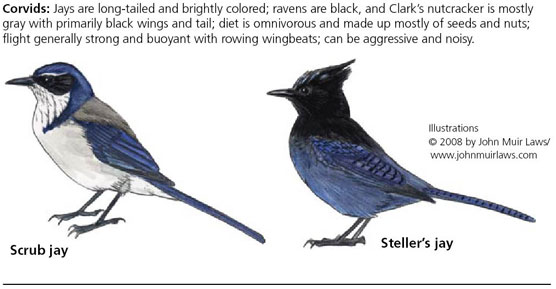
The Corvidae family is comprised of crows, jays, ravens, and
magpies. This family typically contains birds that are
larger than other birds in the order Passeriformes. They
also have a long bill with bristles covering their nostrils.
These birds typically live in open areas such as grasslands,
scrub areas, and open forests. Birds belonging to the
Corvidae family are often omnivores eating a wide variety of
food. Some birds in this family including Steller’s Jay
also store their food. It is also typical for both sexes
to look similar in the Corvidae. A lot of birds in this
family are also very intelligent (WJJ 2014).
Genus: Cyanocitta
The word Cyanocitta means blue jay (CAC 2013).
When broken down cyan means blue and citta refers to a
chattering bird which is a jay. The genus
contains only the Blue Jay and Steller’s Jay. Both of
these birds are new world jays differing slightly in color.
They also both have separate ranges that rarely overlap with
Steller’s jay being found in
western United States and the Blue
Jay being found in the eastern United States (Greene et al.,
1998).
Species: Cyanocitta stelleri
The Cyanocitta stelleri is placed here because it is a dark blue
or black crested jay. Its closest relative the Cyanocitta
cristata and Steller’s jay mitochondrial sequences also differ
by 10.7% meaning they are quite different genetically (Greene et
al., 1998). The specific name stelleri comes from George
W. Steller, the German zoologist that discovered the jay (CAC
2013).
The Steller’s Jay is in the class, Aves, which are birds. Some of the basic characteristics of avian species are feathers, a toothless horny beak, a strong stomach and skeleton (ADW 2001). The phylogeny to the left is showing how closely related the classes, Aves and Crocodilia, are to each other. The classes, Testudinata, Lepidosauria, and Crocodilia are all reptiles (TR 2002), and all share a common ancestor with the class, Aves. Birds are classified with the reptiles because they share some similar characteristics. The biggest similarity is Aves and Crocodilia are both amniotes, meaning their eggs are protected by and extra membrane (ADW 2001).
The phylogeny below is showing how the class of Aves breaks down. As stated above, the Steller’s Jay is part of the class Aves. Steller’s Jays are in the order Passeriformes, which are the perching birds, and further broken down into the family Corvidae, which are jays, magpies, and crows (CAC 2013). The phylogeny is showing how the genus, Cyanocitta, is related to other genus. The Steller’s Jay is in the genus Cyanocitta (CAC 2013). There are only two different species in the genus, Cyanocitta, the Steller’s Jay and the Blue Jay. Cyanocitta means blue jay (CAC 2013), which why there are only two species in the genus. The closest genus to Cyanocitta is Aphelocoma, which are the scrub jays.
Back to Home Forward to Habitat
